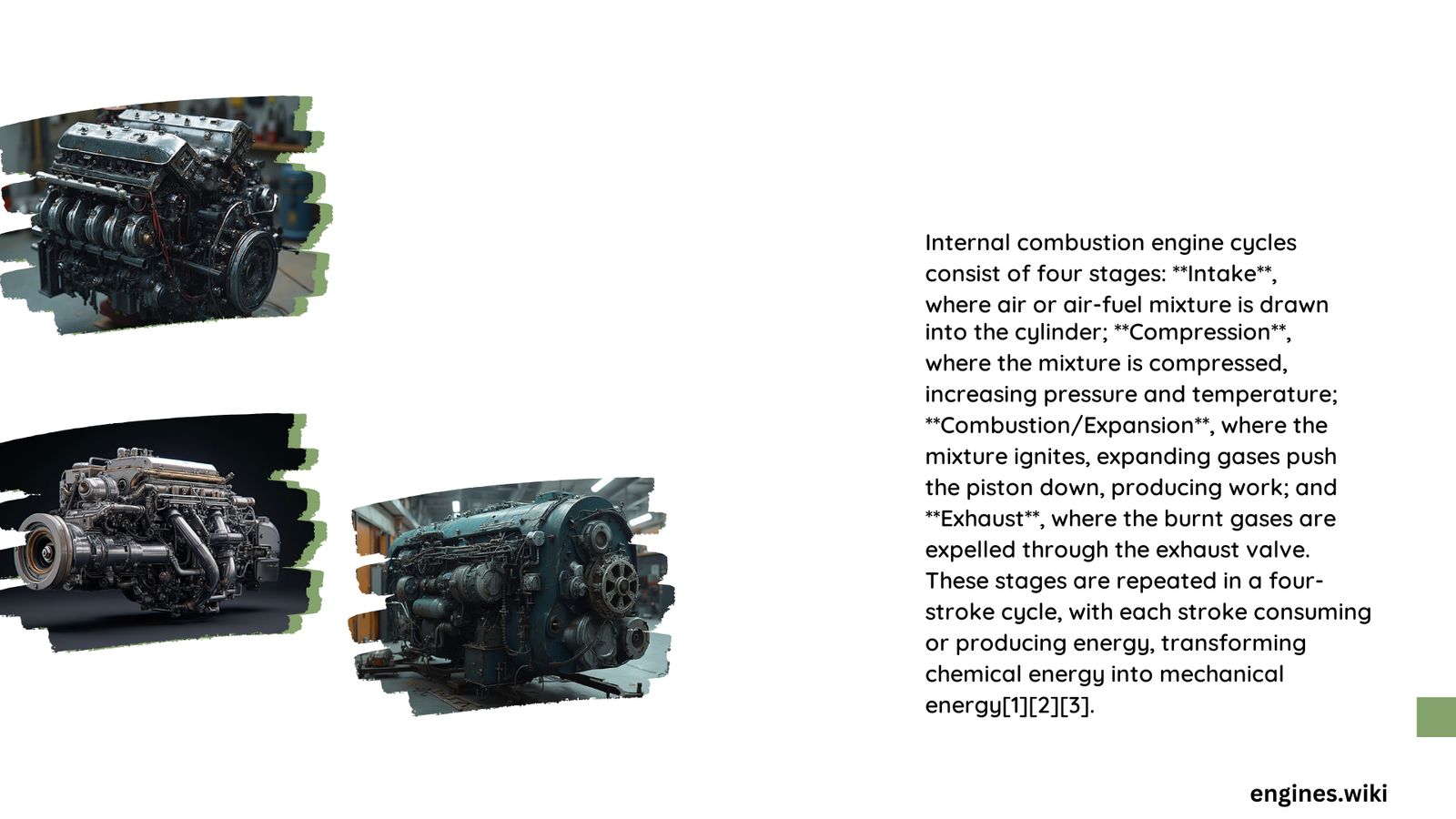Internal combustion engine cycles represent complex thermodynamic processes that convert chemical energy into mechanical work through precise combustion mechanisms. These sophisticated systems utilize controlled fuel combustion within enclosed chambers, transforming thermal energy into rotational motion through meticulously engineered mechanical interactions between pistons, crankshafts, and combustion chambers.
What Are Internal Combustion Engine Cycles?
Internal combustion engine cycles are fundamental thermodynamic processes that transform chemical energy stored in fuels into mechanical power through controlled combustion sequences. These cycles involve intricate interactions between air, fuel, compression, and expansion stages.
Key Characteristics of Engine Cycles
| Cycle Type | Compression Ratio | Combustion Principle | Typical Applications |
|---|---|---|---|
| Otto Cycle | 6-10 | Constant Volume | Gasoline Engines |
| Diesel Cycle | 14-22 | Constant Pressure | Diesel Engines |
How Do Otto Cycles Operate?

The Otto cycle represents a critical thermodynamic process primarily used in gasoline engines. Its operation involves four primary stages:
- Intake Stroke
- Air-fuel mixture enters combustion chamber
- Intake valve opens
-
Piston moves downward
-
Compression Stroke
- Intake valve closes
- Piston compresses air-fuel mixture
-
Compression increases temperature and pressure
-
Power Stroke
- Spark plug ignites compressed mixture
- Rapid combustion generates high-pressure expansion
-
Piston forced downward, generating mechanical energy
-
Exhaust Stroke
- Exhaust valve opens
- Combustion gases expelled
- Piston moves upward, preparing for next cycle
What Distinguishes Diesel Cycles?
Diesel cycles differ fundamentally from Otto cycles through several critical characteristics:
- Higher Compression Ratios: 14-22 compared to Otto cycle’s 6-10
- Auto-Ignition Mechanism: Fuel ignites through compression heat
- Constant Pressure Combustion
- Direct Fuel Injection
Performance Metrics
- Thermal Efficiency:
- Otto Cycle: Approximately 60.2%
- Diesel Cycle: Up to 64.7%
What Challenges Affect Engine Cycle Performance?
Several critical factors impact internal combustion engine cycle performance:
- Compression Ratio Limitations
- Heat Management
- Combustion Stability
- Emissions Control
Technological Mitigation Strategies
- Advanced materials engineering
- Precision fuel injection systems
- Enhanced cooling mechanisms
- Electronic engine management
Why Are Emission Controls Critical?
Emission control represents a paramount consideration in modern internal combustion engine design:
- Regulatory Compliance
- Environmental Protection
- Technological Innovation
Emission Reduction Technologies
- Catalytic converters
- Particulate filters
- Exhaust gas recirculation systems
- Advanced fuel formulations
What Future Developments Are Anticipated?
Emerging trends in internal combustion engine cycles include:
- Hybridization
- Electrification
- Alternative fuel compatibility
- Advanced computational modeling
Research Focus Areas
- Increased thermal efficiency
- Reduced environmental impact
- Enhanced power density
- Lightweight design strategies
Conclusion
Internal combustion engine cycles represent a complex interplay of thermodynamic principles, mechanical engineering, and technological innovation. Continuous research and development promise increasingly efficient and environmentally responsible propulsion systems.
